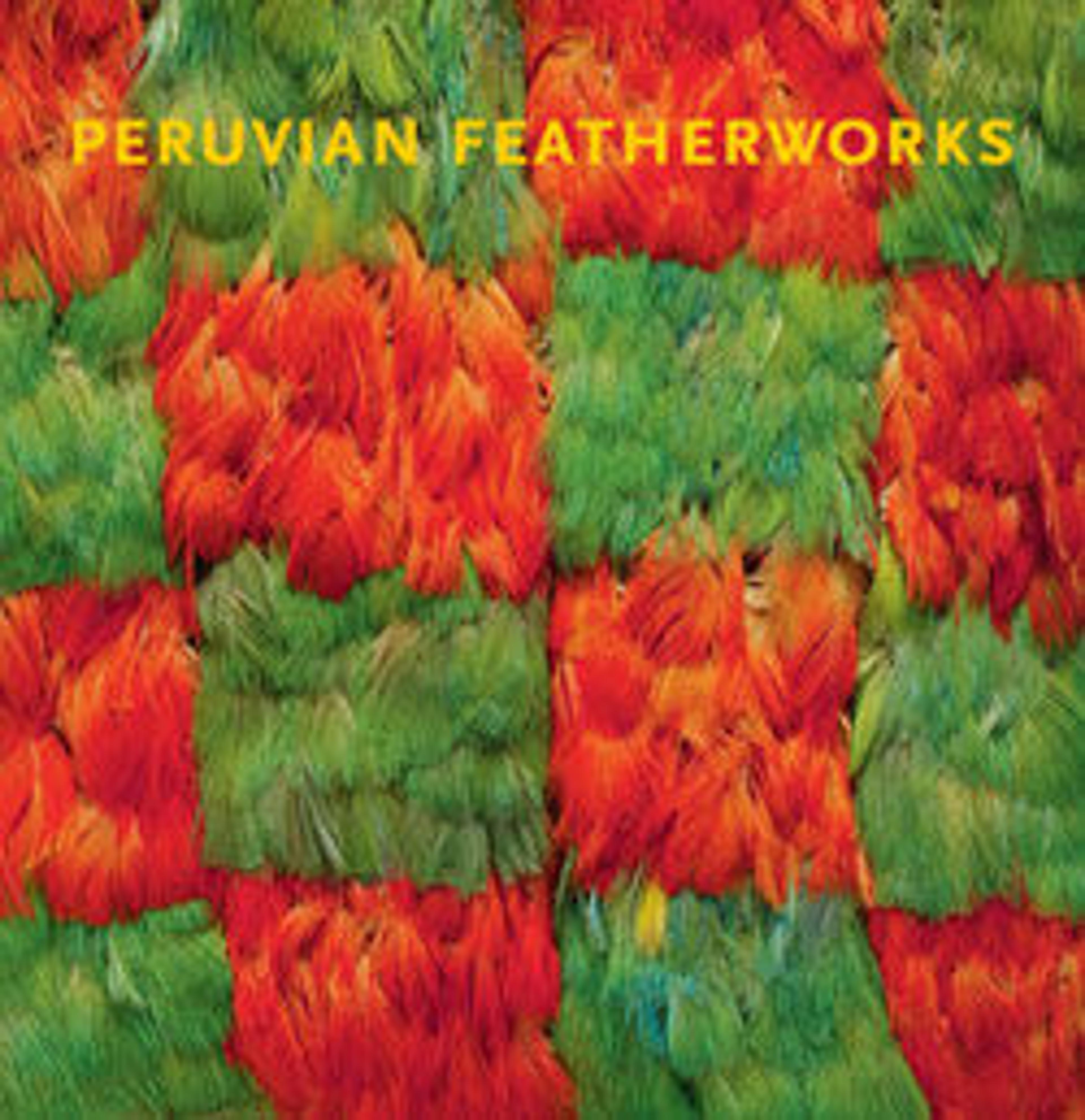Miniature Dress
Colorful bird feathers were highly prized items in ancient Peru and textiles covered with them are among the most spectacular and luxurious works made in the Precolumbian world. This miniature feathered dress is one of a large group of similar garments reportedly found in an offering at Ullujaya in the lower Ica Valley in southern Peru. The miniatures are one-fourth to one-third the size of full-sized garments. Since their manufacture follows the conventions used for full-sized male and female garments, technical, constructional, and patterning features allow the distinction between women's dresses or men's tunics to be seen. The women's dresses in the group have a checkerboard design on the front, as seen here. The horizontal openings for head and arms are along the seam at the top. However, since the openings are sewn closed, the miniature dresses were not actual garments that could have been put on statues with arms. The use of such miniature garments in ancient Andean cultures is unclear; they may have been symbolic substitutions in votive contexts.
Feathered textiles were made by specialists. The feathers were tied onto long strings, which in turn were sewn to the plain cotton cloth. The feather tips are often clipped to create sharp outlines, as on this example.
Feathered textiles were made by specialists. The feathers were tied onto long strings, which in turn were sewn to the plain cotton cloth. The feather tips are often clipped to create sharp outlines, as on this example.
Artwork Details
- Title: Miniature Dress
- Date: 12th–13th century
- Geography: Peru, Ica Valley
- Culture: Ica
- Medium: Cotton, feathers
- Dimensions: H. 8 3/4 × W. 8 5/8 in. (22.2 × 21.9 cm)
- Classification: Textiles-Featherwork
- Credit Line: The Michael C. Rockefeller Memorial Collection, Bequest of Nelson A. Rockefeller, 1979
- Object Number: 1979.206.639
- Curatorial Department: The Michael C. Rockefeller Wing
More Artwork
Research Resources
The Met provides unparalleled resources for research and welcomes an international community of students and scholars. The Met's Open Access API is where creators and researchers can connect to the The Met collection. Open Access data and public domain images are available for unrestricted commercial and noncommercial use without permission or fee.
To request images under copyright and other restrictions, please use this Image Request form.
Feedback
We continue to research and examine historical and cultural context for objects in The Met collection. If you have comments or questions about this object record, please contact us using the form below. The Museum looks forward to receiving your comments.
